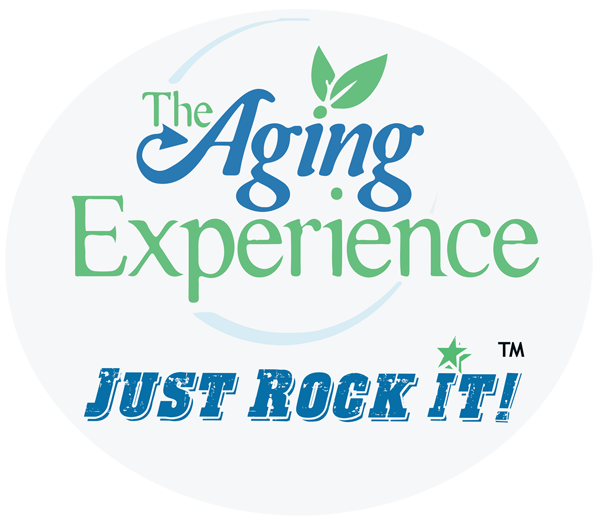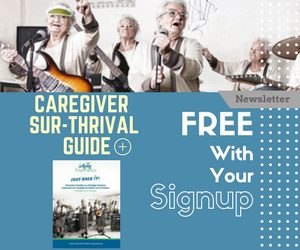Physical Activity May be Best Option for Middle-aged Women Who are Overweight or Obese to Avoid Heart Disease

Avoid heart disease with physical activity, yes, even walking can help.
Low-to-moderate physical activityÛÓat the start of the study and during itÛÓwas the only lifestyle factor found to protect overweight/obese women from becoming at-risk for heart disease.
More specifically, women who participated in physical activity during the study were 16 percent less likely to become at-risk for heart disease compared with women who were not physically active.
The researchers also identified several “triggers” that predisposed women to become at-risk for heart disease:
- Women who had elevated fasting glucose levels or took antidiabetic drugs at the start of the study were more than three times as likely to become at-risk for heart disease compared with women who had normal fasting glucose levels when the study began.
- Women who had hypertension at the start of the study were three times more likely to fall into the at-risk group compared with women who were not hypertensive at the start of the study.
- Women who gained weight during the study were 16 percent more likely to become at-risk for heart disease compared with women who did not gain weight.
“A large number of women who began the studyÛÓ more than 40 percent of themÛÓ were no longer heart-healthy by the end of it,” said Dr. Khan. “But our study does demonstrate the important role that physical activity can play in protecting overweight or obese women from becoming at-risk for heart disease. Our findings suggest that physical activity may be able to prevent overweight women from developing heart disease even if they have risk factors for the disease.”
E-Cigarettes Can Help Smokers to Quit

Could help but it’s not the total answer for quitting smoking.
E-Cigarettes Can Help Smokers to Quit
People attempting to quit smoking without professional help are approximately 60% more likely to report succeeding if they use e-cigarettes than if they use willpower alone or over-the-counter nicotine replacement therapies such as patches or gum, reveals new research published in Addiction. The study surveyed 5,863 smokers between 2009 and 2014 who had attempted to quit smoking without the aid of prescription medication or professional support. 20% of people trying to quit with the aid of e-cigarettes reported having stopped smoking conventional cigarettes at the time of the survey. lobbyists ÛÏE-cigarettes could substantially improve public health because of their widespread appeal and the huge health gains associated with stopping smoking,Û says Professor Robert West of University College London’s Department of Epidemiology & Public Health, senior author of the study. ÛÏHowever, we should also recognize that the strongest evidence remains for use of the NHS (UK’s National Health Service) stop-smoking services. These almost triple a smokerÛªs odds of successfully quitting compared with going it alone or relying on over-the-counter products.Û
Merrill Lynch Clear㢠Living Your Best Life in Retirement Through Exploration of Life Priorities
 Merrill Lynch Clear㢠Living Your Best Life in Retirement Through Exploration of Life Priorities You have heard the statistics about aging and the litany of lectures, including from me, about preparing for aging. During a recent webinar, Merrill Lynch demonstrated a new tool that you might be interested in exploring. By the way, this is not an endorsement. My wife and I actually use Fidelity for retirement planning. Nonetheless, here goes. Merrill Lynch Clear㢠modernizes the process of preparing for retirement through:
Merrill Lynch Clear㢠Living Your Best Life in Retirement Through Exploration of Life Priorities You have heard the statistics about aging and the litany of lectures, including from me, about preparing for aging. During a recent webinar, Merrill Lynch demonstrated a new tool that you might be interested in exploring. By the way, this is not an endorsement. My wife and I actually use Fidelity for retirement planning. Nonetheless, here goes. Merrill Lynch Clear㢠modernizes the process of preparing for retirement through:
- An exploration of seven distinct life priorities ÛÒ including health, home, family, finance, giving, work and leisure ÛÒ connecting the financial aspects of life in retirement.
- Deeper levels of education and insight about priorities and concerns through a series of videos, guides, seminars and other rich content to help people make informed decisions.
- Specially trained financial advisors with innovative tools to bring this approach and these resources together for clients throughout their lives, as needs and priorities change.
The framework is designed to better connect peopleÛªs lives to their finances through broader, more personally meaningful conversations with their financial advisors about their priorities. This exploration then leads to goal setting, the creation of an investment strategy to help pursue those goals, and making course corrections along the way. ÛÏRetirement today is a totally different experience,Û said Andy Sieg, head of Global Wealth and Retirement Solutions for Bank of America Merrill Lynch. ÛÏBaby boomers are living later life in ways no other generation has. This requires a bold new approach to helping people think about their lives in a comprehensive way, explore opportunities and challenges, and seek peace of mind.Û Among Merrill Lynch ClearÛªs unique tools is a series of iPad ÛÏDiscovery AppsÛ created to help facilitate deeper conversations between clients and advisors. The first apps in this expanding series focus on the exploration of life priorities, along with social security, health care, lifetime income and knowing your investment personality. These apps offer a dynamic approach to helping people consider retirement in ways they may never have before, using illustrations, educational resources, and interactive exercises to better understand priorities and allocate resources based on personal goals and circumstances. When announcing this tool, Merrill Lynch also named Cyndi Hutchins as director of Financial Gerontology, providing a resource to help advisors address the challenges that come with aging. The retirement website (www.ml.com/retire) has also been redesigned with actionable content and resources from Merrill Lynch and third-party experts to help clients navigate life in retirement. New content being introduced on an ongoing basis includes original articles, client and expert videos, webcasts and research on topics ranging from: Changing the Conversation About Retirement, Understanding Health Care Costs, The CaregiverÛªs Financial Guide, Sharing the Family Vacation Home, An Encore Education for Your Encore Career, Financial Guide for First-Time Grandparents and much more.
Sagging Eyelids – Not Just a Cosmetic Concern

Certain behaviors in our control can help with sagging eyelids.
Moderate-Intensity Physical Activity For Older Adults Reduces Mobility Problems
 Moderate-Intensity Physical Activity For Older Adults Reduces Mobility Problems Among older adults at risk of disability, participation in a structured moderate-intensity physical activity program, compared with a health education intervention, significantly reduced the risk of major mobility disability (defined in this trial as loss of ability to walk about a quarter mile), according to a study published by JAMA. MobilityÛÓthe ability to walk without assistanceÛÓis a critical characteristic for functioning independently. Reduced mobility is common in older adults and is an independent risk factor for illness, hospitalization, disability, and death. Marco Pahor, M.D., of the University of Florida, Gainesville, and colleagues with the Lifestyle Interventions and Independence for Elders (LIFE) study, randomly assigned 1,635 sedentary men and women (age 70 to 89 years) who were able to walk 400 meters to a structured, moderate-intensity physical activity program conducted in a center and at home that included aerobic, resistance, and flexibility training activities, or to a health education program, consisting of workshops on topics relevant to older adults and upper extremity stretching exercises. The adults participated for an average of 2.6 years. Participants were enrolled at 8 centers across the country. Major mobility disability was experienced by 246 participants (30.1 percent) in the physical activity group and 290 participants (35.5 percent) in the health education group. Persistent mobility disability was exå_perienced by 14.7 percent of participants in the physical activity group and 19.8 percent of participants in the health education group. A subgroup with lower physical function at study entry, representing 45 percent of the study population, received considerable benefit from the physical activity intervention. ÛÏThese results suggest the potential for structured physical activity as a feasible and effective intervention to reduce the burden of disability among vulnerable older persons, in spite of functional decline in late life. To our knowledge, the LIFE study is the largest and longest duration randomized trial of physical activity in older persons,Û the authors write. So forget the learning, get to the doing.
Moderate-Intensity Physical Activity For Older Adults Reduces Mobility Problems Among older adults at risk of disability, participation in a structured moderate-intensity physical activity program, compared with a health education intervention, significantly reduced the risk of major mobility disability (defined in this trial as loss of ability to walk about a quarter mile), according to a study published by JAMA. MobilityÛÓthe ability to walk without assistanceÛÓis a critical characteristic for functioning independently. Reduced mobility is common in older adults and is an independent risk factor for illness, hospitalization, disability, and death. Marco Pahor, M.D., of the University of Florida, Gainesville, and colleagues with the Lifestyle Interventions and Independence for Elders (LIFE) study, randomly assigned 1,635 sedentary men and women (age 70 to 89 years) who were able to walk 400 meters to a structured, moderate-intensity physical activity program conducted in a center and at home that included aerobic, resistance, and flexibility training activities, or to a health education program, consisting of workshops on topics relevant to older adults and upper extremity stretching exercises. The adults participated for an average of 2.6 years. Participants were enrolled at 8 centers across the country. Major mobility disability was experienced by 246 participants (30.1 percent) in the physical activity group and 290 participants (35.5 percent) in the health education group. Persistent mobility disability was exå_perienced by 14.7 percent of participants in the physical activity group and 19.8 percent of participants in the health education group. A subgroup with lower physical function at study entry, representing 45 percent of the study population, received considerable benefit from the physical activity intervention. ÛÏThese results suggest the potential for structured physical activity as a feasible and effective intervention to reduce the burden of disability among vulnerable older persons, in spite of functional decline in late life. To our knowledge, the LIFE study is the largest and longest duration randomized trial of physical activity in older persons,Û the authors write. So forget the learning, get to the doing.









